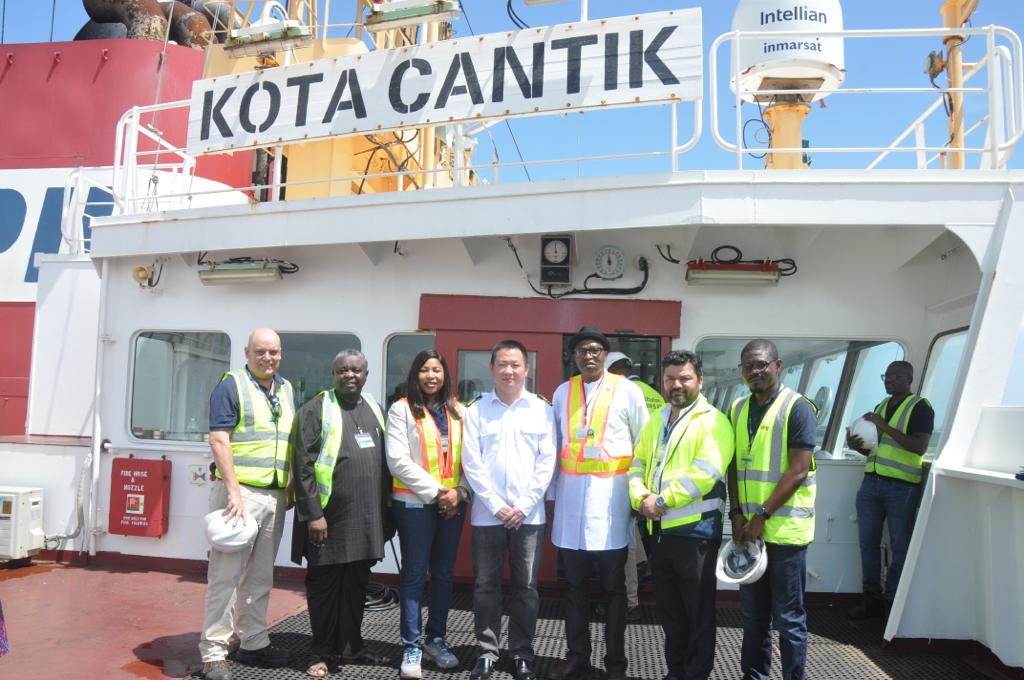APM Terminals Apapa made history in June, 2023 when it received the largest container ship to ever call at the Lagos Port Complex Apapa.
The Singapore-flagged Kota Cantik, operated and managed by Pacific International Lines, is a 6,606 TEU containership with a draught of 11.6 metres, length overall of 300 metres and beam of 40 metres.
The historic berthing of the vessel was witnessed by officials of Nigerian Ports Authority, PIL and APM Terminals Apapa.
“We are excited at this historic achievement. We thank the Nigerian Ports Authority for maintaining the channels and for professionally piloting the vessel to the port,” said Terminal Manager, APM Terminals Apapa, Steen Knudsen. “Without the effort, support and approval of NPA, this would not have been possible.”
He said one of the advantages of bigger vessels is economies of scale through lower slot costs for consignees.
Lower cost per unit
“Carrying a higher number of containers per vessel translates into lower capital and operating costs per container, thereby reducing the transportation cost per unit,” he continued. “Also, since bigger vessels consume less fuel per container transported, the emissions per TEU are lower than for smaller vessels. Thus, bigger vessels like the Kota Cantik are more environmentally friendly and contribute to lowering the total emissions of the shipping industry.”
Speaking during a reception for the vessel and its crew, the Managing Director of PIL Nigeria, Kevin Taylor, said consignees and the Nigerian economy will benefit from the vessel call.
“The customers in Nigeria have more opportunities to get cargoes in Lagos and also for competitive exports,” Taylor said.
Charles Okaga, Port Manager of the Lagos Port Complex Apapa, said he was excited about the berthing of the vessel, barely two weeks into his resumption at the port.
“The port is the major trade facilitation platform and when vessels of this type berth, it reduces cost of shipping and consumer goods because all of these costs are put to every shipment. But if you pay less for shipment and logistics, the landing cost will also reduce and that reduces inflation while strengthening the ability of people to afford consumer goods,” Okaga said.
Reduced waiting times
Captain Daniel Osiakagum, Harbour Master for Lagos Pilotage District, said, “This milestone has put Nigerian Ports Authority on the map to say that 300 meters and over will be handled subsequently and we are ready for 350 to 400-metre vessels in Lagos
Pilotage District. This means that waiting time will be reduced outside and Nigerian Ports Authority will make more revenue for government.”
Head of Operations at APM Terminals Apapa, Karan Tariyal, expressed delight at the berthing of the containership at the terminal. He also commended the management of Nigerian Ports Authority (NPA) and the NPA Harbours department for their approvals and professional handling of the ship.
Also speaking, the Commercial Manager, APM Terminals Apapa, Temilade Ogunniyi said, “The bigger the vessels you berth, the lower your cost and this leads to economies of scale. It also improves the pace of the operations at the terminal, leads to efficiency, reduces waste and delivers a faster turnaround time of vessels, which is a huge benefit to the economy.”

























